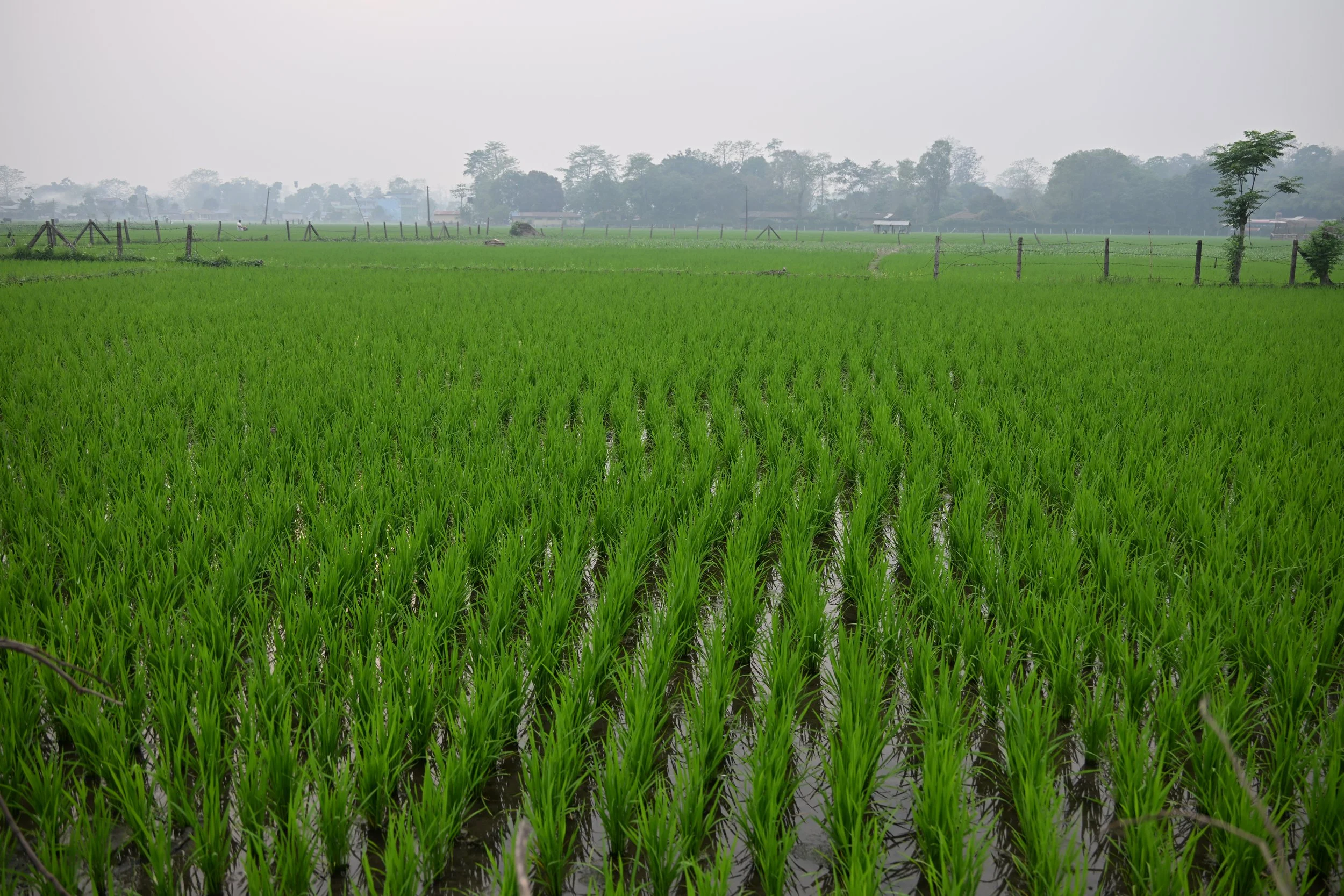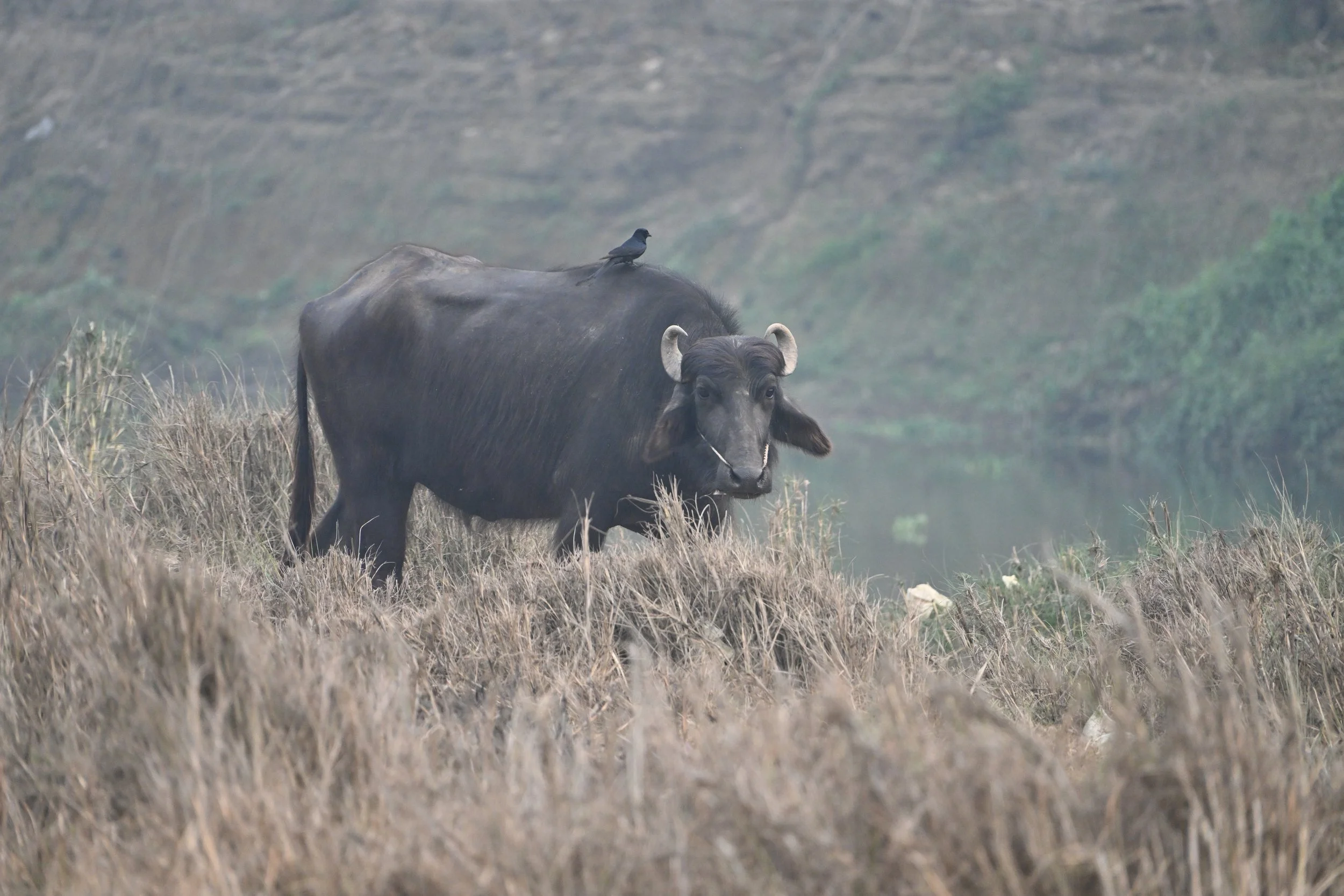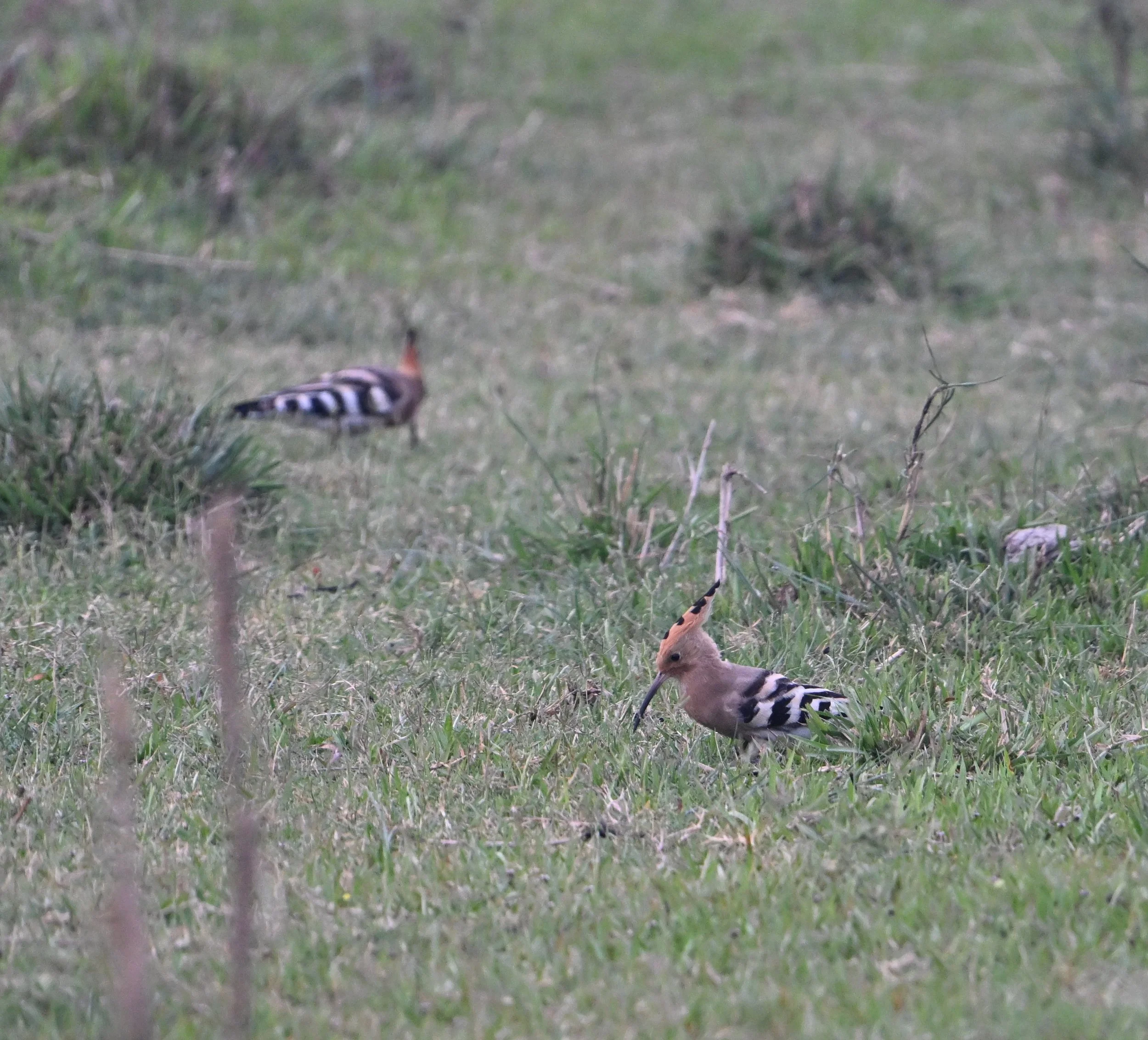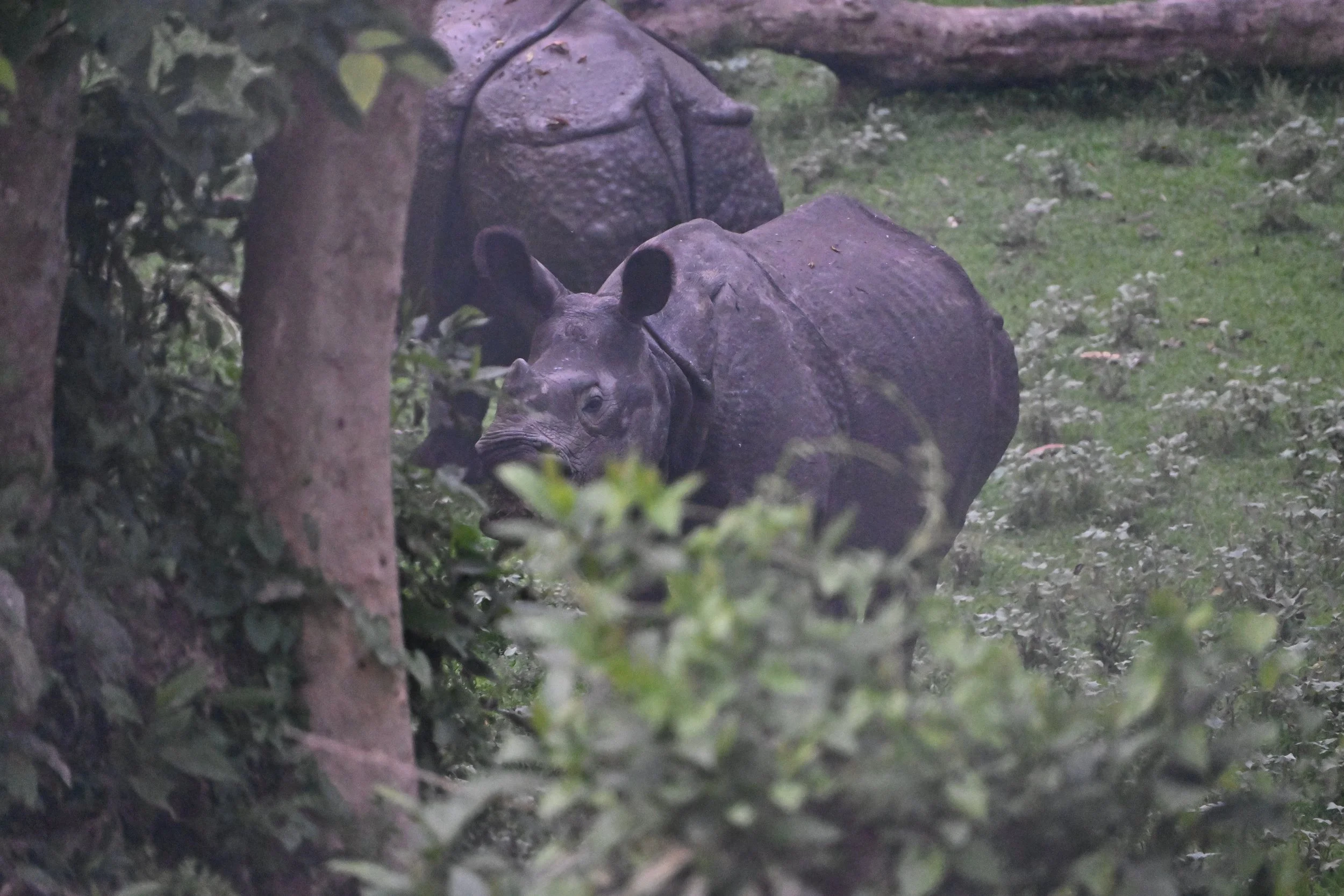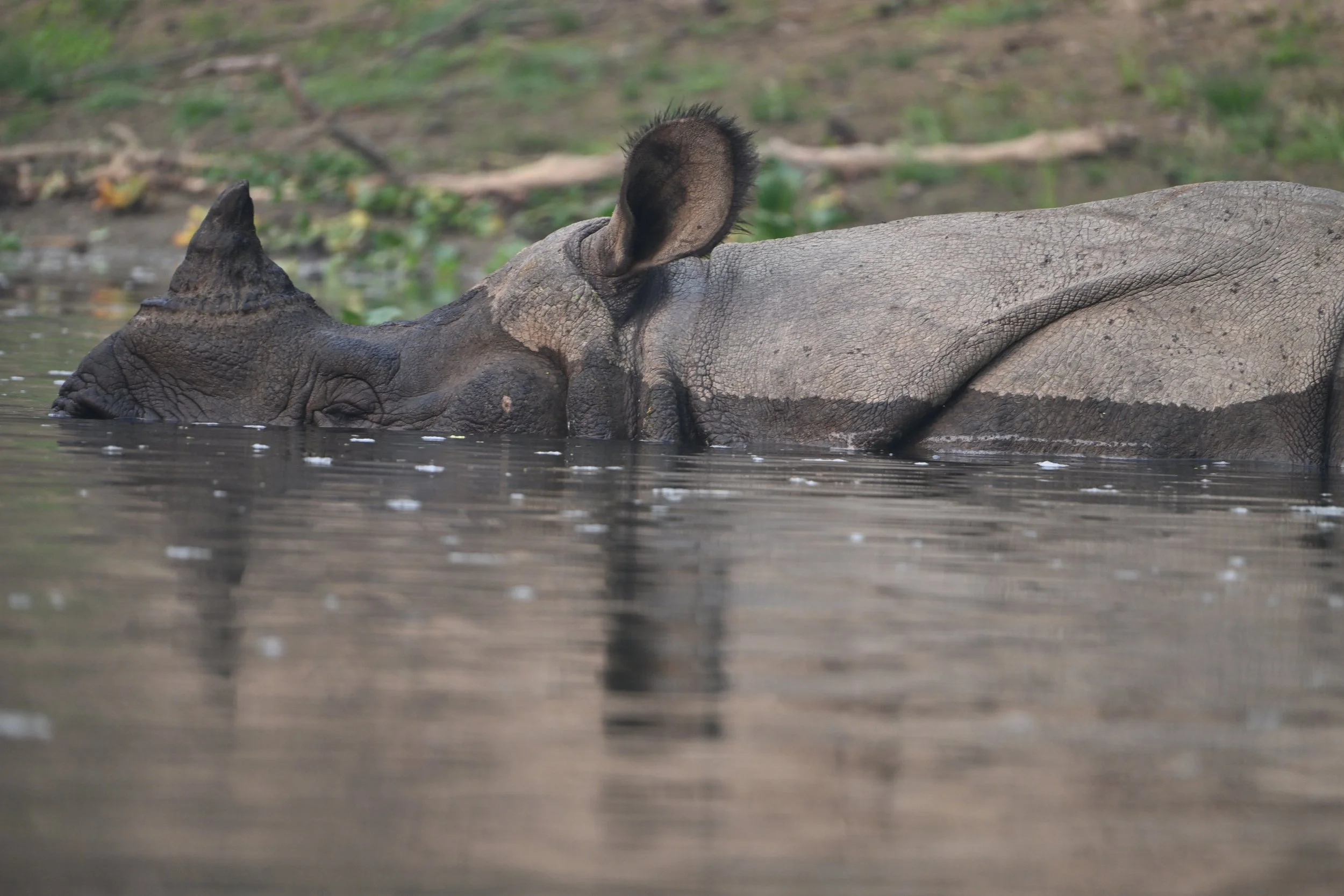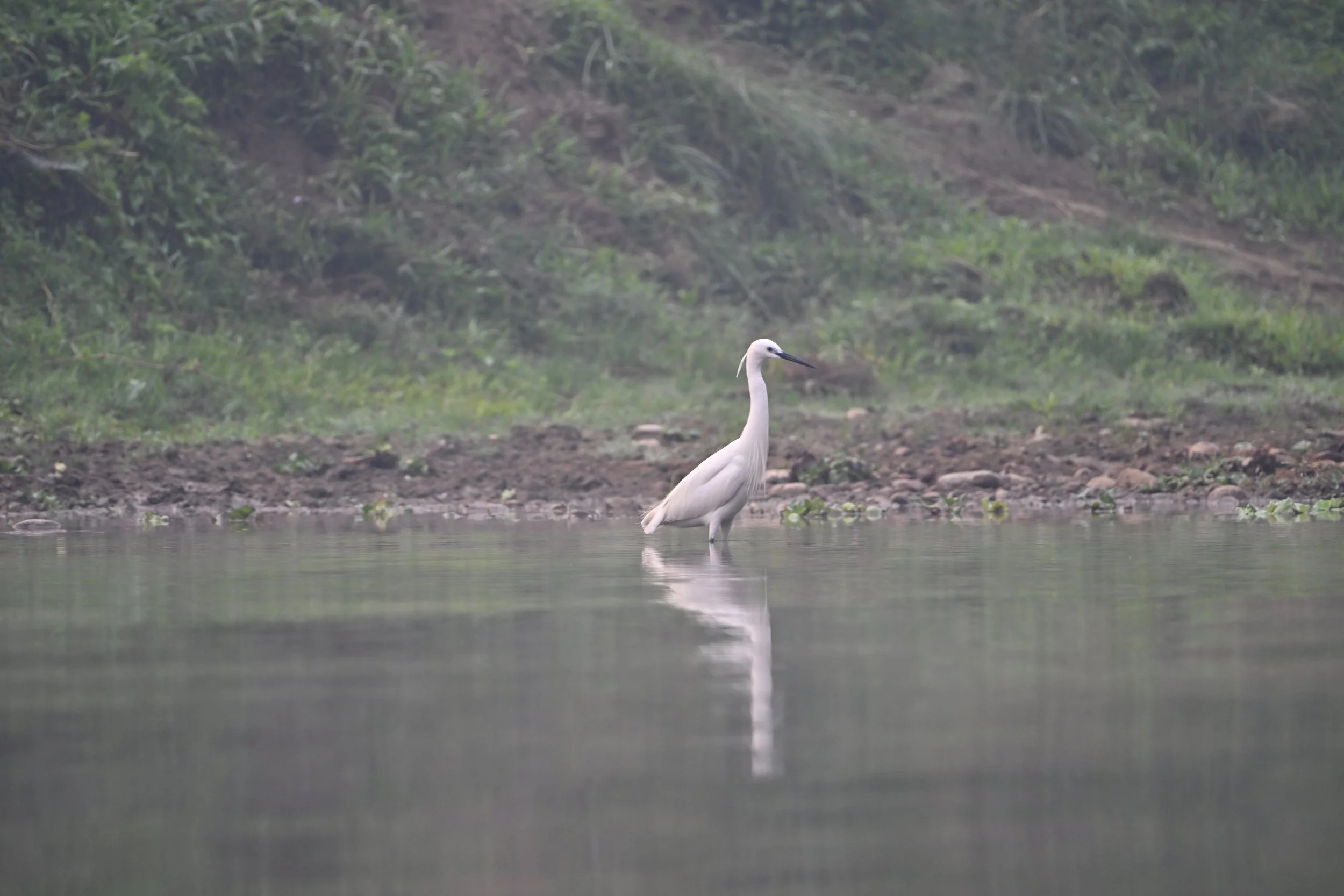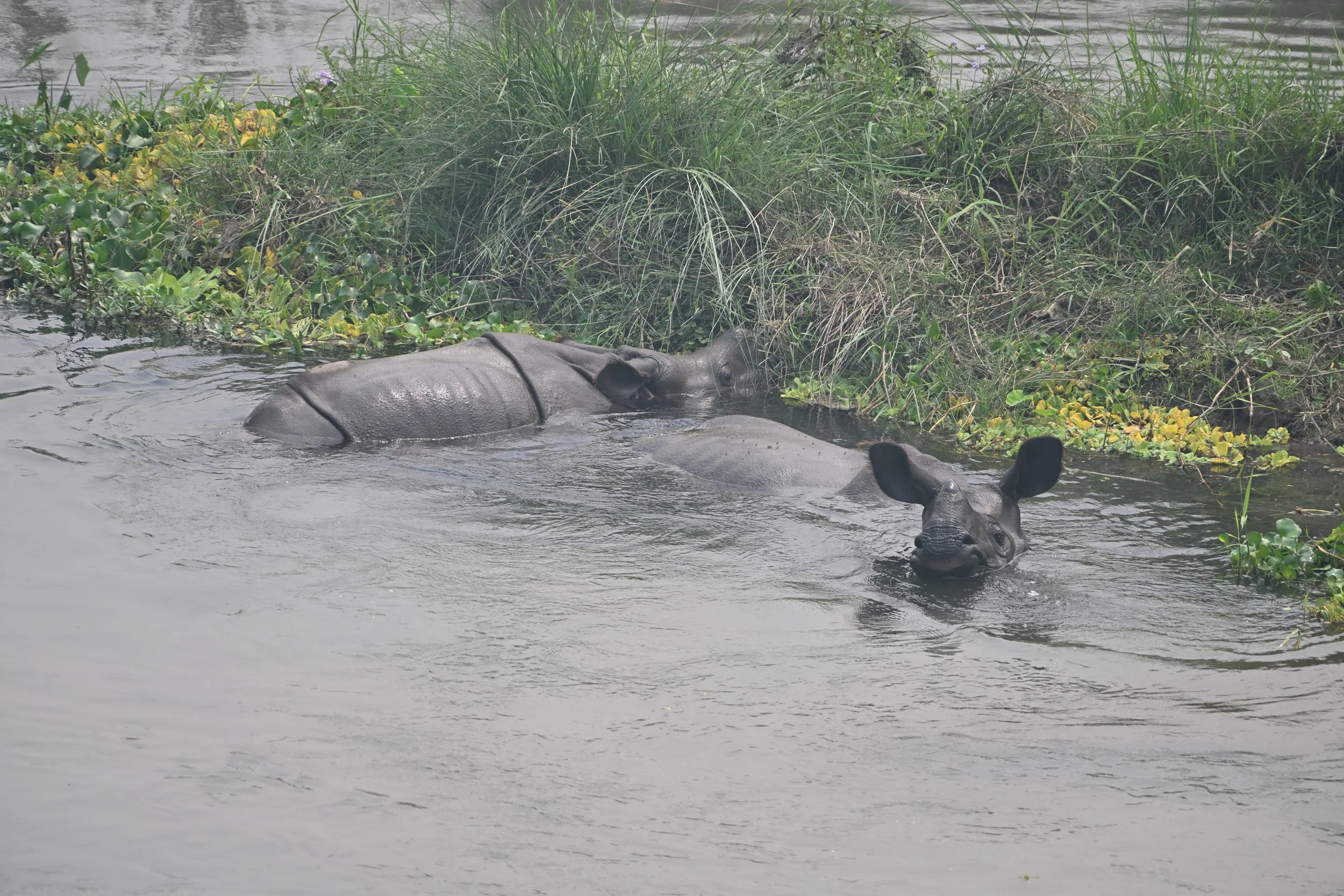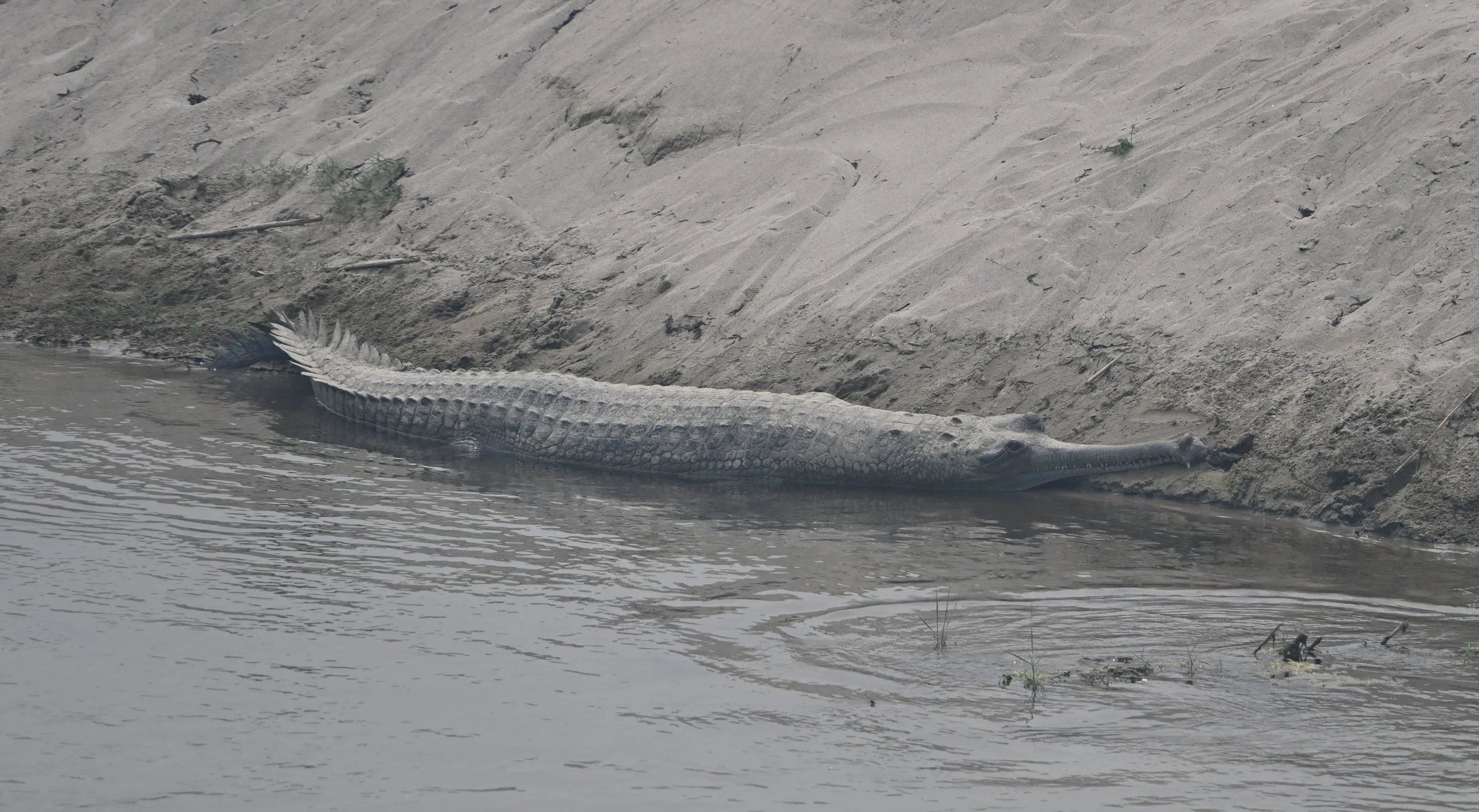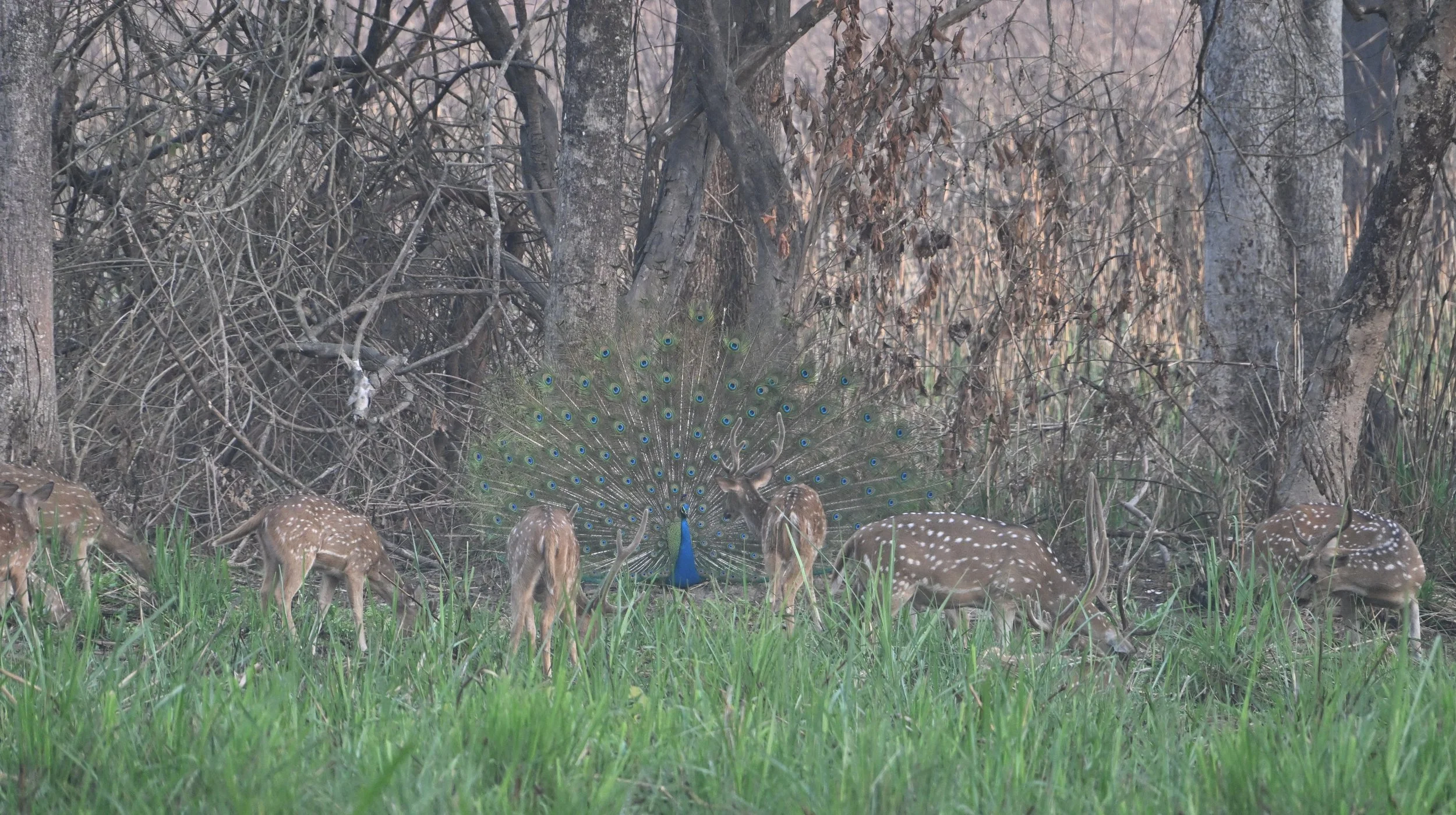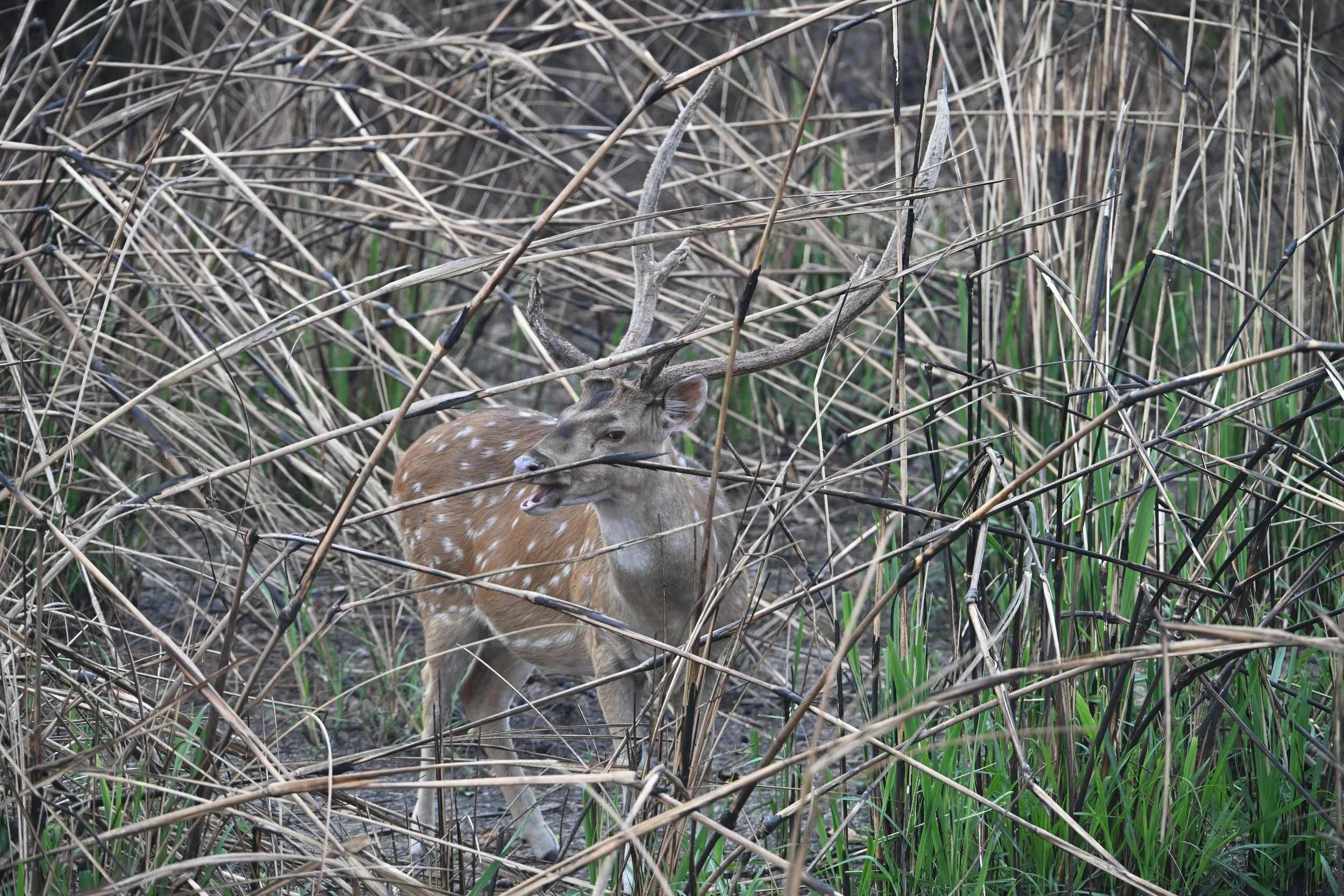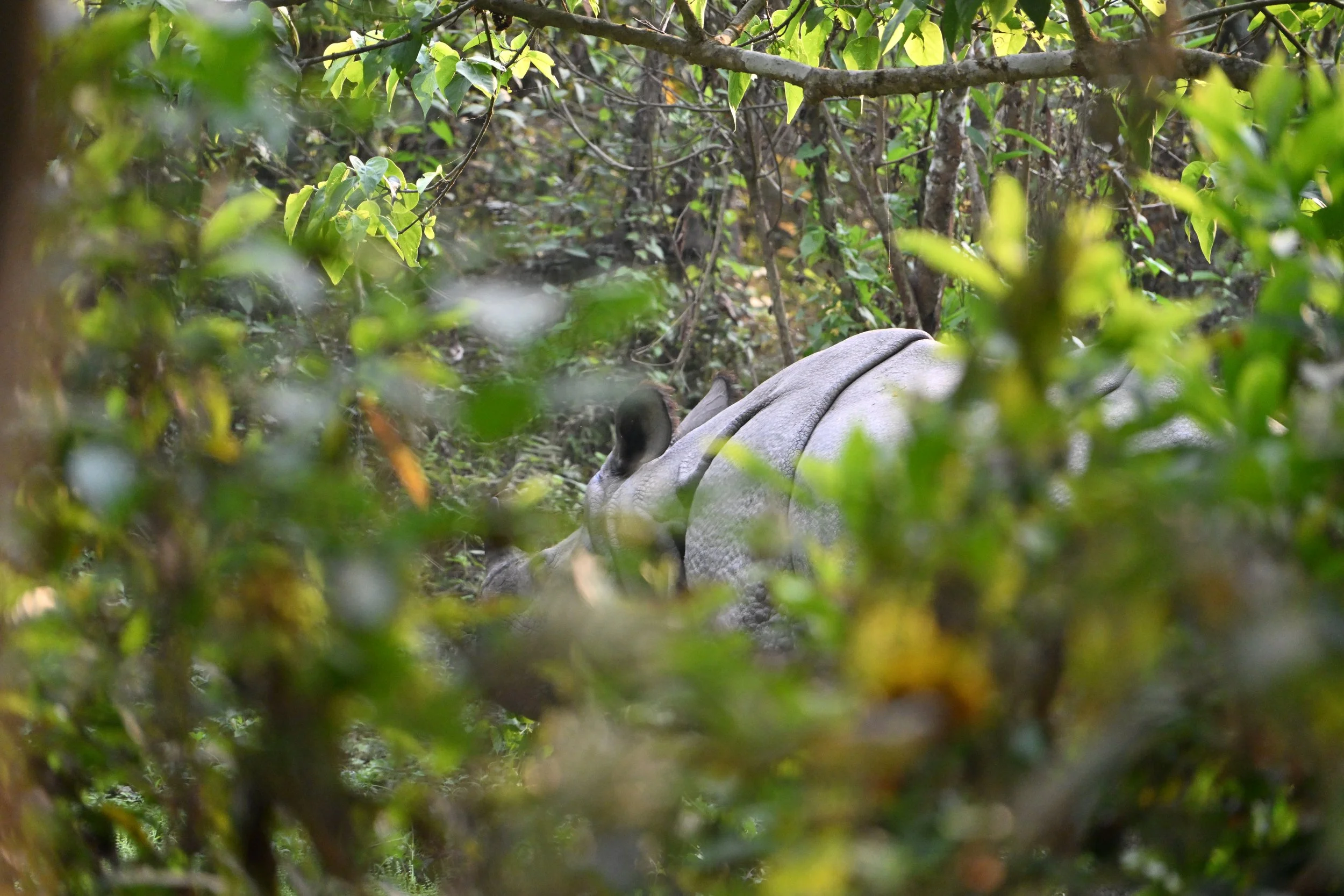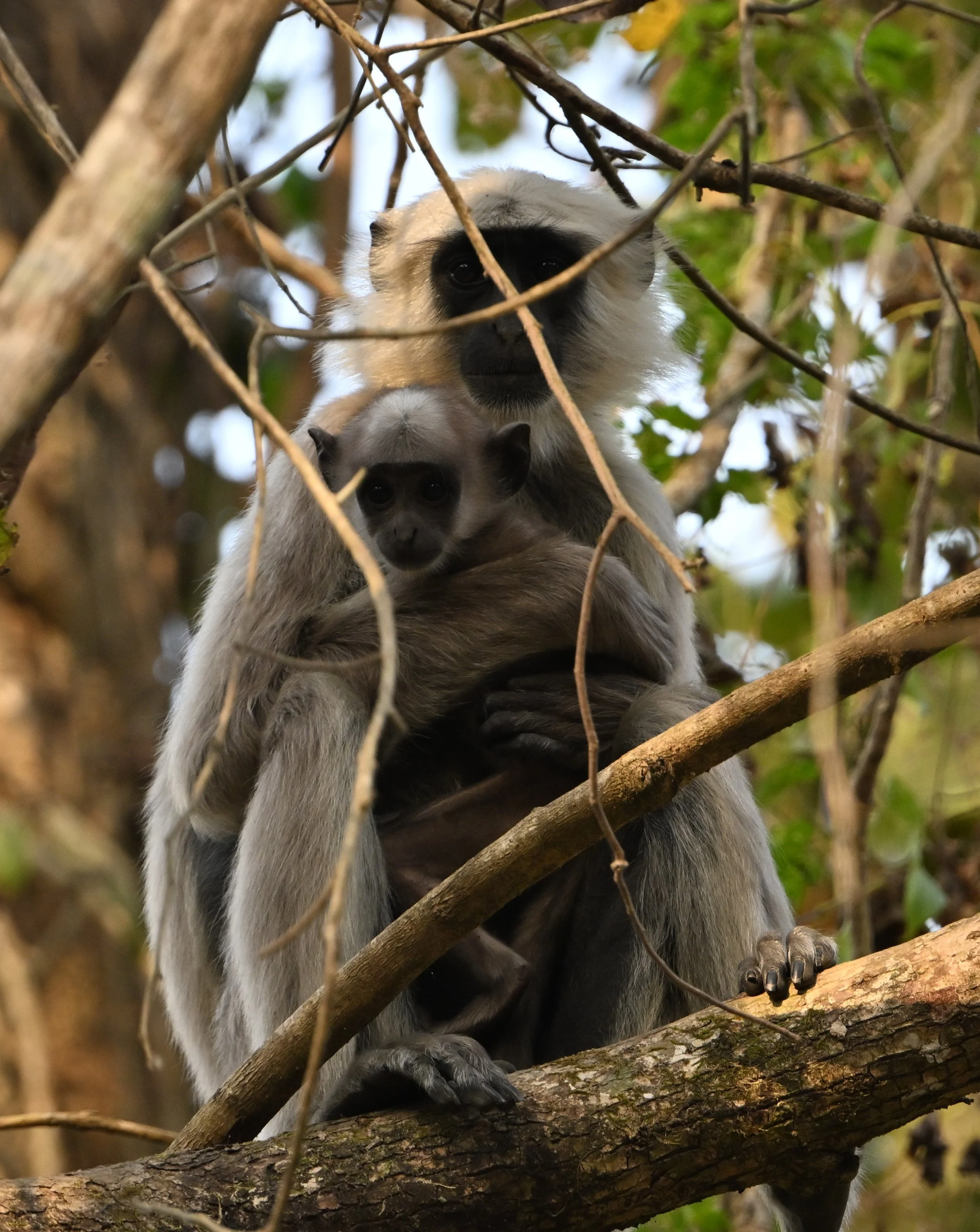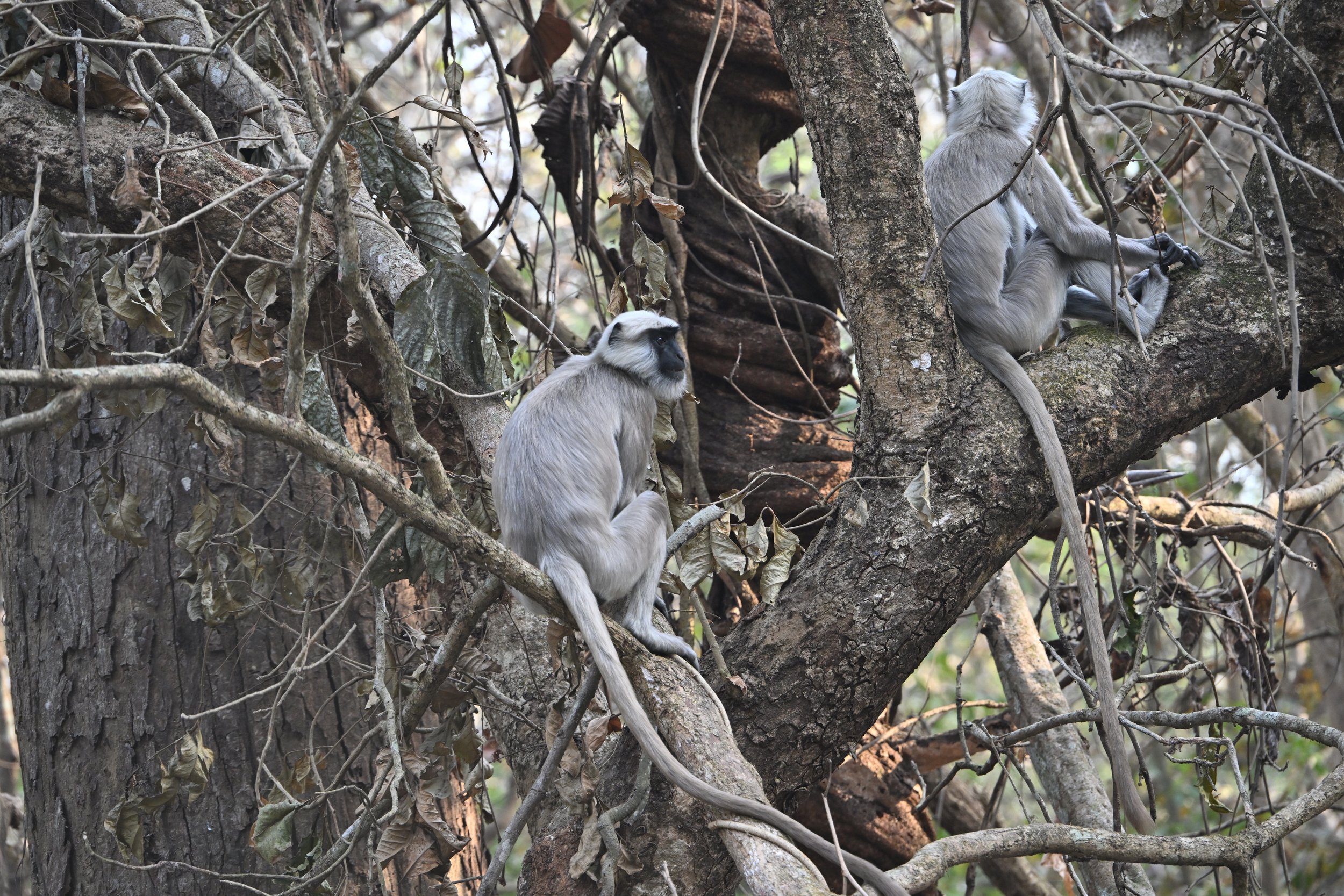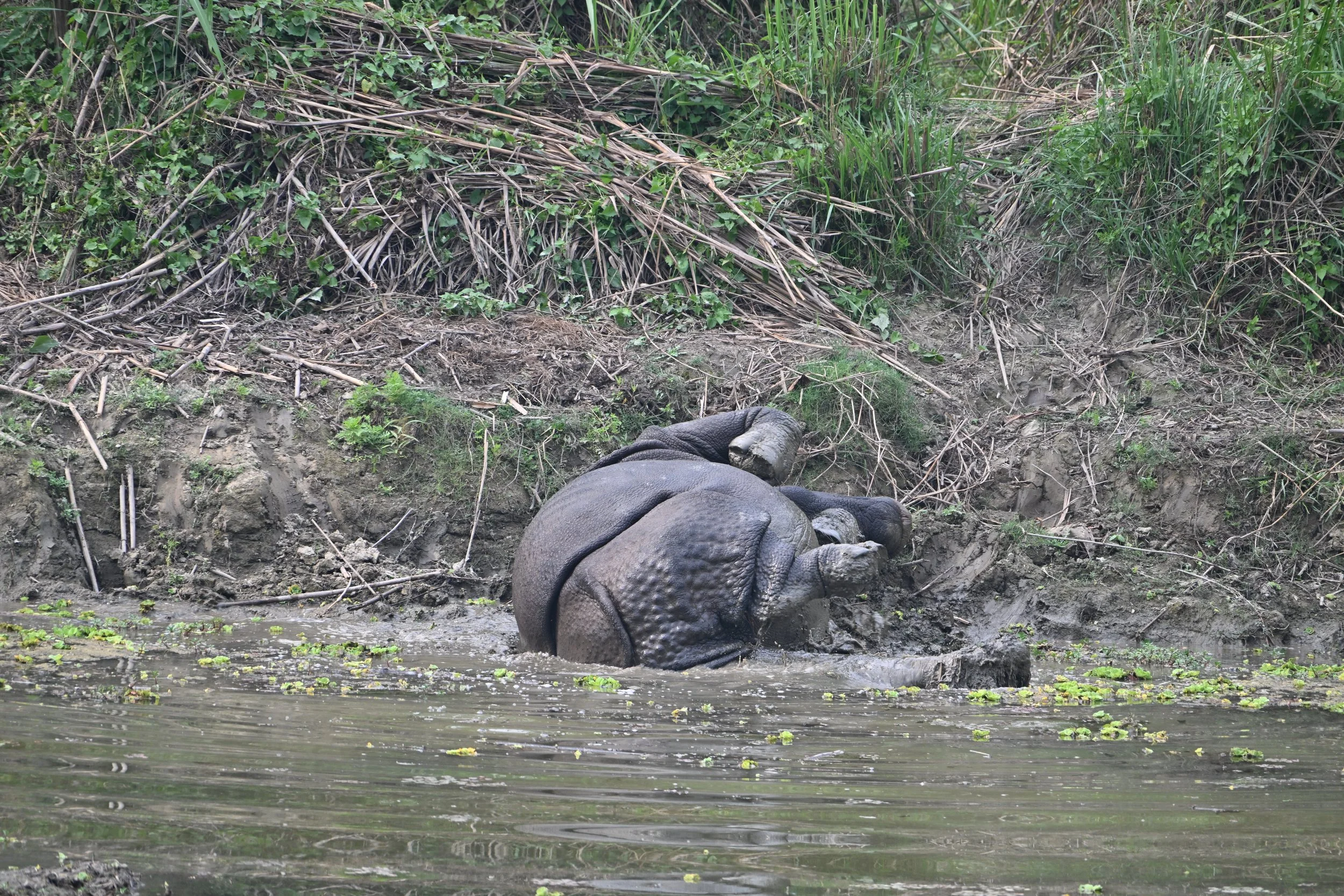Chitwan National Park
This is the first national park of Nepal, established in 1973. It is located southwest of Kathmandu, near the Indian border, and has an area of 368 sq. miles. We stayed in a hotel just outside the park, and on our first evening there, went on a walk along a river and through a local village. The rice paddies were lush and green…
… and the animals along the river…
… were quite varied -
The fearsome guy above is a Mugger Crocodile. That common name comes from the Hindi word “magar” meaning water monster. These live in fresh or stagnant water, in contrast to saltwater crocodiles. The latter have a much narrower snout.
We next encountered Eurasian Hoopoes…
… and a White-throated Kingfisher -
And just as we were about back to the hotel, we spied a mother and youngster…
… Greater One-horned Rhinoceros! We were told very emphatically by our guide that they are not called Indian rhinos.
In 1950 there were an estimated 800 rhinos in the Chitwan area, but after the area was opened to settlement by farmers, that number had dwindled to 95 by 1970. With the establishment of Chitwan park and strong anti-poaching work, their numbers are back up to near 800 again.
The next morning we went on a river in a dugout canoe -
… and silently floated by…
… our closest encounter during our entire stay.
We also saw lots of neat birds, including this uncommon Lesser Adjutant Stork…
… and this regal Little Egret -
At the Elephant Breeding Center (which breeds elephants for use by the army and park rangers), it was very difficult to see them chained up, but the 10 day old baby was pretty cute -
That afternoon we were to go on a jeep safari, but even before we boarded the jeep, the river treated us to another mother and youngster…
… as well as a Gharial, another type of crocodile -
Our guide told us they need fresh, flowing water, rather than the stagnant water that the Muggers prefer. We visited the breeding center in Chitwan, where eggs laid in the wild are collected and hatched, and the gharials are allowed to grow undisturbed for 5-6 years before being released. This species is considered critically endangered.
Ok, back to the jeep safari…
(of course a reflection) :)
We saw several large herds of Spotted Deer, which are fairly small (see how they compare to the peacock in the next picture)…
… while they sport quite impressive antlers -
when they raise their heads, the tips of the antlers nearly reach their tail!
On our second afternoon, we had another jeep safari in a different portion of the park, and we came close to three different rhinos deep in the bush -
This was my attempt at video -
(as usual, click the link at the bottom of the email to watch the video in your browser)
We also spied some Black-faced Langurs…
… with their amazing tails -
Since I don’t have a spectacular ending photo, I’ll just wish you a happy roll-in-the-mud!
